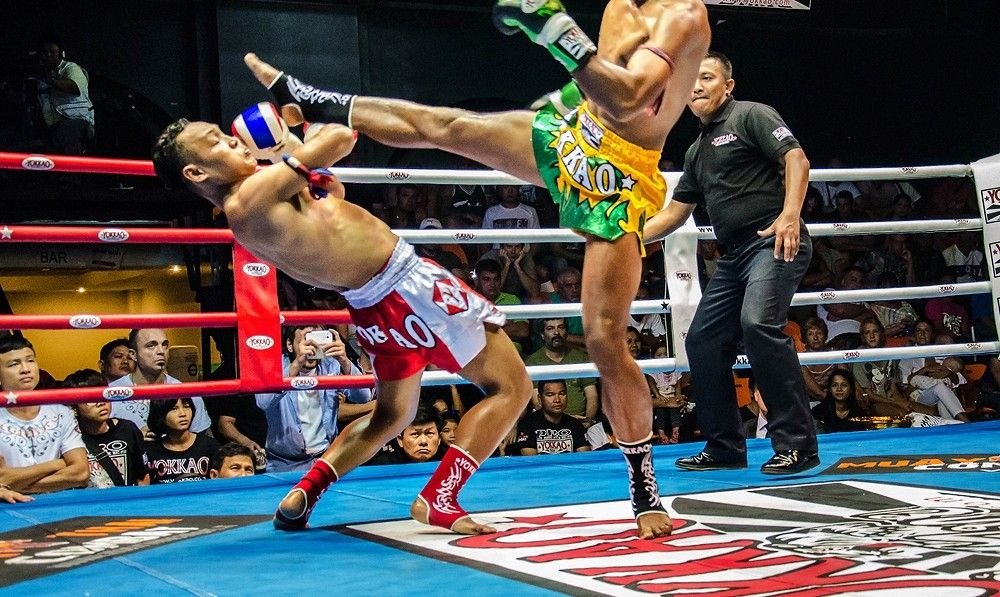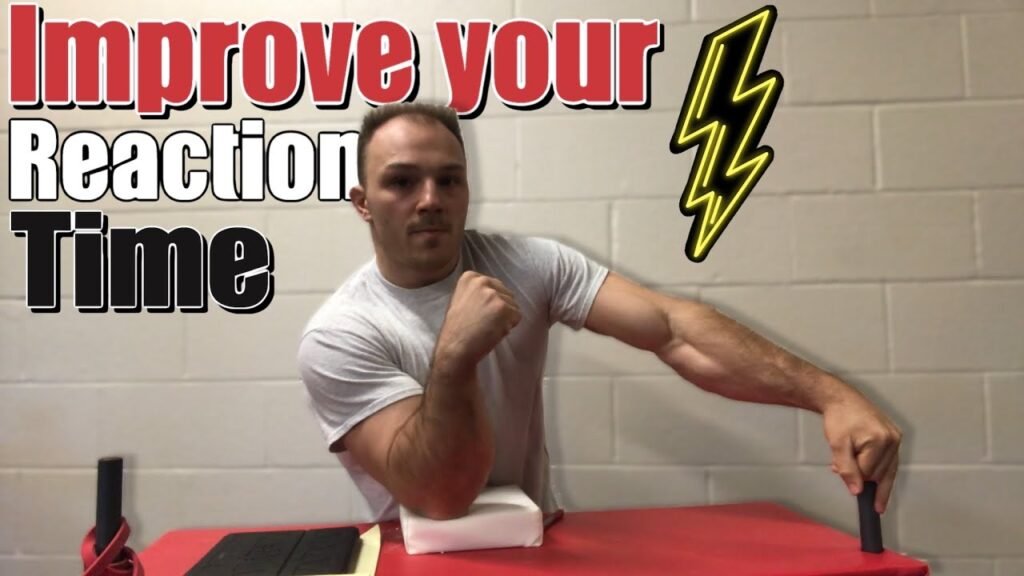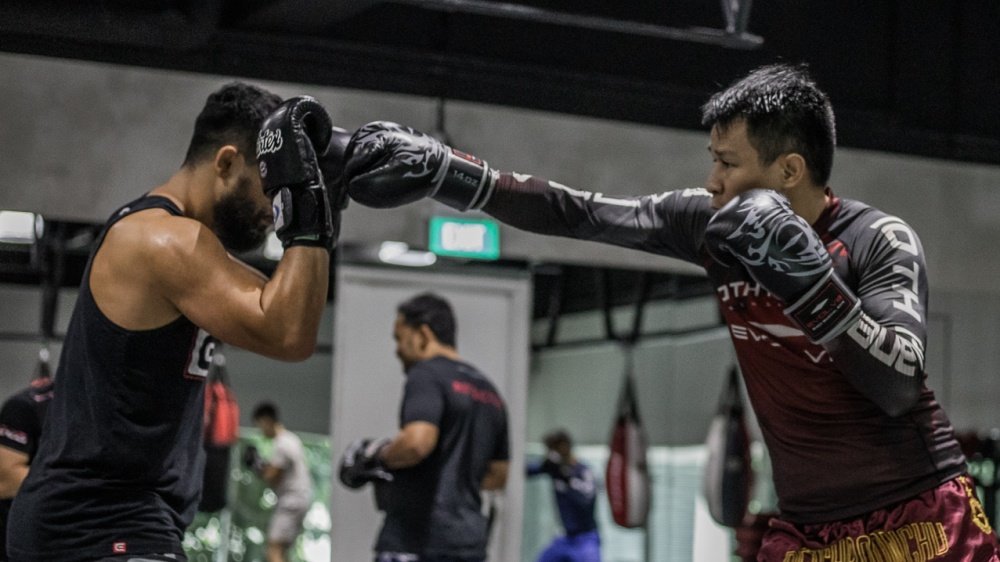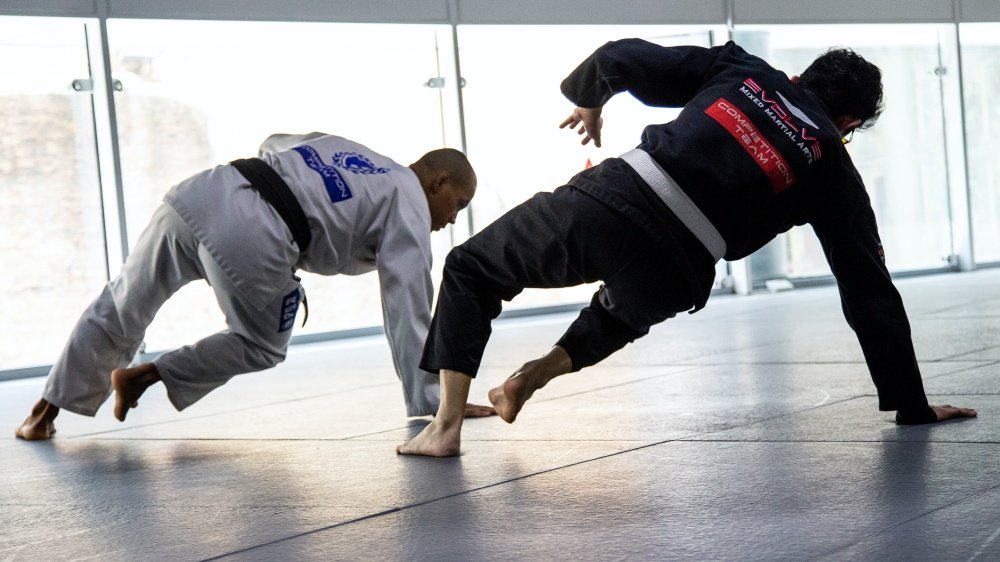In the world of grappling, having quick reflexes and lightning-fast reaction time can be the difference between victory and defeat. Whether you’re a seasoned practitioner or just starting out, there are advanced techniques you can employ to enhance your reaction time on the mat. From specific drills focused on reaction speed to mental exercises that sharpen your focus, this article explores a variety of strategies that will take your grappling skills to the next level. Step onto the mat and unlock the secrets to a quicker response in the fascinating world of grappling.

Train Specific Grappling Techniques
When it comes to improving your reaction time in grappling, one of the most effective ways is to train specific techniques that require quick reactions. By focusing on drills that mimic real-life scenarios and require rapid decision-making, you can develop the ability to quickly assess and respond to your opponent’s movements. For example, practicing submission escapes or takedown defenses will not only sharpen your technical skills but also enhance your reaction time as you learn to anticipate and counter your opponent’s attacks.
Incorporating realistic scenarios into your training is another valuable approach. By simulating various grappling situations, such as starting from disadvantageous positions or defending against multiple opponents, you can train your reactions in the context of actual matches. This type of training enhances your ability to adapt quickly and make split-second decisions, which is crucial in a dynamic and fast-paced sport like grappling.
Additionally, it’s essential to practice different grappling positions to improve your reaction time. By training in various positions, such as guard, mount, or side control, you expose yourself to different challenges and stimuli. This exposure helps your brain become more adaptable and responsive, allowing you to react faster in any situation that arises during a match.
Enhance Cognitive Function
Apart from specific grappling techniques, enhancing your cognitive function can significantly impact your reaction time in grappling. Engaging in regular mental exercises, such as puzzles or memory games, can improve your cognitive abilities overall.
Improving your decision-making skills is another crucial aspect. By practicing making quick but informed decisions during training, you can train your brain to process information rapidly and efficiently. This skill is highly valuable in grappling as you need to analyze and respond to your opponent’s movements while constantly adjusting your strategy.
Furthermore, working on memory and attention span can improve your overall reaction time. Paying attention to details during training and being able to remember patterns or your opponent’s tendencies allows you to react faster and more effectively. Incorporating drills that challenge your memory and require intense focus can help you develop these cognitive abilities necessary for improving reaction time.
Develop Speed and Agility
In grappling, speed and agility play a vital role in reacting quickly to your opponent’s moves. Including speed drills in your training is an excellent way to develop these attributes. These drills can involve rapid changes in movement, such as sprinting, quick direction changes, or explosiveness from different positions. By training your body to move swiftly, you’ll be better equipped to react promptly during matches.
Agility exercises are equally important in improving your reaction time. These exercises focus on improving your ability to change direction, accelerate, and decelerate quickly. Incorporating ladder drills, cone drills, or agility ladder exercises can help you enhance your overall agility, making you more responsive in grappling situations.
Another aspect to consider is footwork and movement. Paying attention to your foot placement and understanding how to utilize footwork effectively can greatly improve your reaction time. By practicing footwork drills, such as lateral shuffles or pivots, you can enhance your ability to evade and counter your opponent’s attacks rapidly.
Improve Reflexes
In grappling, having quick reflexes is crucial to successfully defending against your opponent’s attacks and launching effective counters. Utilizing reaction training tools, such as agility ladders or reaction balls, can greatly enhance your reflexes. These tools force you to react quickly to visual or auditory cues, improving your ability to respond swiftly to your opponent’s actions.
Practicing specific reaction drills is another effective way to improve your reflexes. For example, practicing sprawls or shadow grappling drills can help you develop lightning-fast reflexes when it comes to defending against takedowns or other attacks. Incorporating partner interaction in your training can also sharpen your reflexes as you learn to read and respond to your opponent’s movements in real-time.

Increase Strength and Power
While reaction time primarily revolves around cognitive abilities and quick decision-making, physical attributes like strength and power can significantly contribute to your overall performance. By focusing on compound exercises in your strength training routine, you can develop explosive power and strength that translates into faster reactions on the mat.
Compound exercises, such as deadlifts, squats, or bench presses, engage multiple muscle groups simultaneously. This type of training improves your overall strength and power, allowing you to exert force quickly when needed. Stronger muscles and increased power can facilitate faster movement, making you more responsive during grappling exchanges.
Incorporating plyometric training is another effective way to increase your strength and power while also enhancing your reaction time. Plyometric exercises involve explosive movements, such as box jumps or medicine ball throws. By training your muscles to generate force rapidly, you’re not only improving your explosive power but also conditioning your body to react faster.
Including resistance training in your routine is equally crucial. By utilizing resistance bands or weights, you can develop the strength and power needed to execute techniques quickly and with precision. Moreover, resistance training improves muscular endurance, enabling you to sustain high-intensity efforts during matches, giving you an edge in reacting faster than your opponents.
Optimize Visual Perception
Clear and accurate visual perception is essential in grappling, as it allows you to quickly identify and react to your opponent’s movements. Training your visual tracking skills is an effective way to optimize your visual perception and improve your reaction time. Visual tracking exercises can involve following moving objects with your eyes or tracking an opponent’s motion during sparring sessions.
Practicing peripheral vision exercises is another valuable method to enhance your visual perception. Peripheral vision is crucial in grappling as it allows you to be aware of your opponent’s movements and anticipate their actions. Exercises like focusing on a central point while detecting movement in your peripheral vision can help improve your overall awareness and reaction time.
Improving depth perception is also vital for optimal visual perception. Depth perception allows you to accurately judge the distance between yourself and your opponent, which is crucial when executing techniques or defending against attacks. By practicing depth perception exercises, such as estimating the distance between objects or gauging the range of your strikes, you can fine-tune this skill and improve your reaction time in grappling.

Enhance Proprioception
Proprioception, or the sense of the relative position and movement of body parts, is a crucial aspect of grappling. Engaging in balance exercises is an effective way to enhance proprioception and improve reaction time. By challenging your balance through exercises like single-leg stands or balance board drills, you can train your body to maintain stability and quickly adjust to changes in position.
Utilizing unstable surfaces for training is another valuable approach to enhance proprioception. Exercises performed on wobble boards, stability balls, or foam mats challenge your body’s ability to maintain balance and coordination. By training on these unstable surfaces, you sharpen your proprioceptive skills, allowing you to react quicker and more effectively in grappling exchanges.
Incorporating proprioceptive drills into your grappling sessions can further enhance your proprioception. These drills typically involve movements that require precise control and coordination, such as rolling or flowing drills. By practicing these drills regularly, you can fine-tune your ability to sense and control your body’s movements, ultimately improving your reaction time in grappling.
Utilize Sport-Specific Reaction Time Training
To take your reaction time to the next level in grappling, incorporating sport-specific reaction time training is crucial. Reaction time training equipment, such as light boards or touch pads, can be used to simulate real-match situations and improve your response time. These tools provide visual or tactile cues that trigger your reaction, allowing you to develop faster reflexes in a grappling context.
Incorporating sport-specific reaction drills is equally important. These drills can involve specific grappling movements, such as sprawling to defend against takedowns or quickly transitioning between submission attempts. By practicing these drills repeatedly, you become more familiar with the specific movements and develop quicker reaction times.
Simulating real-match situations during training is another effective method to improve your sport-specific reaction time. By integrating live sparring or simulated matches in your training regimen, you expose yourself to the dynamic nature of actual grappling exchanges. This realistic training environment not only hones your physical skills but also sharpens your reaction time as you learn to adapt to your opponent’s actions in real-time.

Implement Interval Training Methods
Interval training is a highly effective method for improving overall fitness and reaction time in grappling. Incorporating high-intensity interval training (HIIT) into your routine can significantly enhance your cardiovascular endurance and muscular performance. HIIT involves alternating periods of high-intensity exercise with short recovery periods. This type of training conditions your body to withstand intense efforts and recover quickly, allowing you to sustain optimal reaction times during matches.
Utilizing reaction-based interval exercises can further optimize your reaction time during intervals. These exercises involve responding to specific cues or movements with predetermined actions. For example, performing takedown attempts based on your partner’s movements or reacting with specific submission defenses can improve your reaction time while simultaneously conditioning your body.
Combining grappling techniques with interval training is another effective way to improve your reaction time. For example, performing takedown drills at high intensity for a set period followed by a short recovery period challenges your ability to react quickly while maintaining technical precision. By integrating these interval training methods into your grappling sessions, you improve both your physical endurance and reaction time.
Focus on Mental Preparation
The mental aspect of grappling plays a significant role in reaction time. Practicing mindfulness and visualization techniques can help develop your mental focus and improve your reaction time. Mindfulness exercises, such as meditation or deep breathing, can calm your mind and enhance your ability to stay present during matches. By being fully aware of your surroundings, you can react more quickly and effectively to your opponent’s actions.
Developing pre-fight routines is another essential aspect of mental preparation that can improve reaction time. By establishing a consistent pre-fight routine, you create a familiar environment and mindset that prepares you mentally for the match ahead. This routine can include specific warm-up exercises, visualization of successful techniques, or mental affirmation of your abilities.
Managing stress and anxiety is crucial for optimal mental preparation and reaction time in grappling. High-stress situations can negatively impact your performance, both physically and mentally. Implementing stress management techniques, such as deep breathing exercises or positive self-talk, can help you control your emotions and stay focused in tense grappling situations. By reducing stress and anxiety, you enable your mind to react swiftly and efficiently, maximizing your reaction time.
In conclusion, improving your reaction time in grappling requires a multi-faceted approach. By training specific grappling techniques that require quick reactions and incorporating realistic scenarios into your training, you can sharpen your ability to respond rapidly to your opponent’s movements. Additionally, enhancing cognitive function, developing speed and agility, improving reflexes, increasing strength and power, optimizing visual perception, enhancing proprioception, utilizing sport-specific reaction time training, implementing interval training methods, and focusing on mental preparation all contribute to improving reaction time in grappling. By incorporating these advanced strategies into your training regimen, you can take your grappling skills to new heights and become a more formidable competitor on the mat. So get started today and watch your reaction time in grappling soar!

